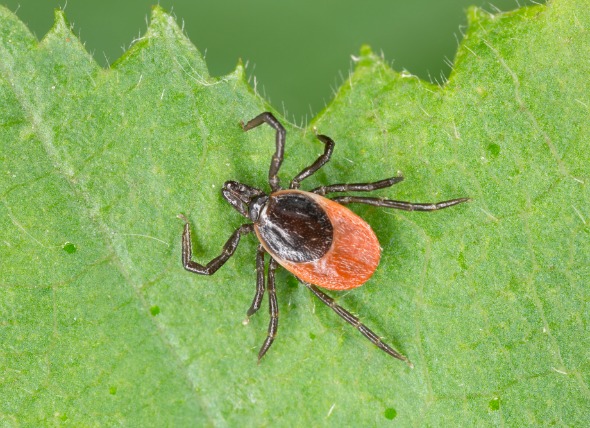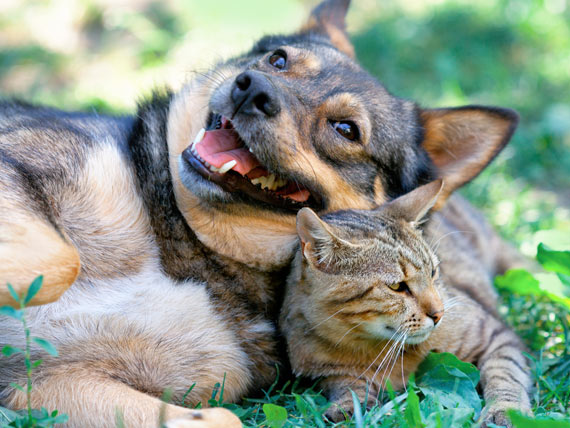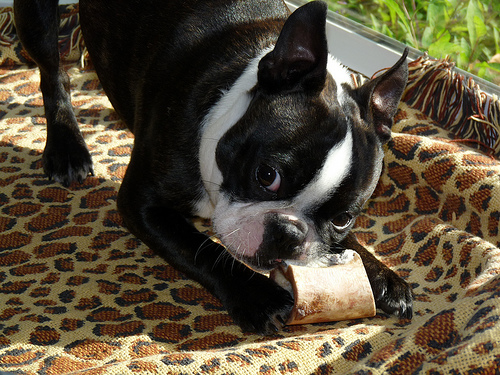

By Jennifer Kvamme, DVM
Summertime is prime time for blood-sucking ticks, and your pets are walking targets for these arachnids (related to spiders and mites) to attach to and feed from. In order to prevent ticks and the potential diseases they carry, it helps to understand how these creatures develop.
There are two broad classifications for the more than 850 species of ticks. They are classed by body structure: soft ticks and hard ticks. Ticks in the Ixodidae family have a hard outer covering, called a scutum. Soft ticks – those without a scutum – belong to the Argasidae family. The most common ticks that prey on pets are the hard bodied ticks. Soft ticks are more common in the Southwest and are typically discovered in the ears of pets, where the skin in thinner.
The majority of hard ticks require three different hosts to complete their development. During this development, ticks go through four stages of life. These stages are egg, larvae (or seed tick), nymph, and adult.
Generally, adult female hard ticks breed while on the host animal and then drop to the ground to lay eggs. A female lays several thousand eggs at a time, which will eventually hatch into the larval stage, known as seed ticks. At this stage of life, these small ticks (about 1/8-inch in size) have six legs.
Ticks can’t jump, so they must find ways to attach to their hosts. They will use blades of grass and other vegetation to elevate themselves to the height where they can easily grasp onto passing animals such as small rodents or birds. Proximate biochemical signals, such as rising carbon dioxide levels emitted by a warm blooded mammal, alert the ticks to passing hosts.
This procedure is called "questing," and ticks use these behaviors to find their first host for an initial blood meal. After filling with blood over several days, the seed ticks fall to the ground again, where they molt (shed their outer skins) and become eight-legged nymphs.
The nymph will then lie in wait for a second host to attach to and engorge on blood. The nymphs prefer a larger animal as a host, such as a raccoon or possum. Following engorgement, nymphs drop to the ground where they molt yet again to finally become adult ticks. The adult ticks then go on a hunt for a third, even larger host, such as a deer or dog, where they are able to feed and then breed, resulting in reproduction (i.e., eggs).
Depending on the species of tick, the entire life cycle can take from two months to years to complete. There are some species of ticks that only require one host (or sometimes two) to complete their life cycle. Hard ticks will typically lay eggs on the ground in protected areas during the spring. The brown dog tick is the exception in that it may lay its eggs indoors. As ambient temperature and moisture levels rise, eggs hatch into larvae. Larvae feed and molt into nymphs during late summer.
Nymphs will be inactive during winter and then start feeding again in the spring. After feeding and molting into adults through the summer months, the ticks spend the fall season feeding and breeding. Males will die off, while the females survive through winter and lay their eggs again the next spring.
Soft ticks differ from hard ticks in that they will develop through several nymph stages, slowly increasing in size until a final molt results in the adult. Their life cycles can take much longer than hard ticks, up to several years in duration. Soft ticks are even known to be able to survive long periods of time without access to a blood meal from a host.
***
No matter the species or type of tick you encounter on your pet, it’s best to remove them carefully and completely. Know how to remove a tick safely before attempting it, as a poorly conducted removal can cause damage – to you and/or your pet.
If you live an in area where ticks are prevalent, or if you are going to be taking your pet to a location that is known for ticks (e.g., wooded areas and open, grassy areas), protect your pet by applying a tick collar, a spot-on, or a spray to prevent ticks from making a meal out of your pet this summer.
Even with tick repellants, make sure to do a full inspection of your pet whenever s/he has been outside in an area known for harboring ticks. Vigilance is the best protection against tick borne diseases.
 Top 5 DIY Halloween Costumes for Your Dog
Best Homemade Costume Ideas for Dogs
There a
Top 5 DIY Halloween Costumes for Your Dog
Best Homemade Costume Ideas for Dogs
There a
 To Vaccinate or Not: A Vet's Perspective
By T. J. Dunn, Jr., DVM
Among pet caretaker
To Vaccinate or Not: A Vet's Perspective
By T. J. Dunn, Jr., DVM
Among pet caretaker
 6 Ways to Go Natural With Your Pet
Natural Remedies for Dogs and Cats
By Cheryl Lock
6 Ways to Go Natural With Your Pet
Natural Remedies for Dogs and Cats
By Cheryl Lock
 The Nutritional Aspects of Bone Composition
By T. J. Dunn, Jr., DVM
Raw bones h
The Nutritional Aspects of Bone Composition
By T. J. Dunn, Jr., DVM
Raw bones h
 Reducing Pet Fear in the Veterinary Setting: One Veterinarian’s Experience
This article is courtesy of The Hannah Society.
&n
Reducing Pet Fear in the Veterinary Setting: One Veterinarian’s Experience
This article is courtesy of The Hannah Society.
&n
Copyright © 2005-2016 Pet Information All Rights Reserved
Contact us: www162date@outlook.com